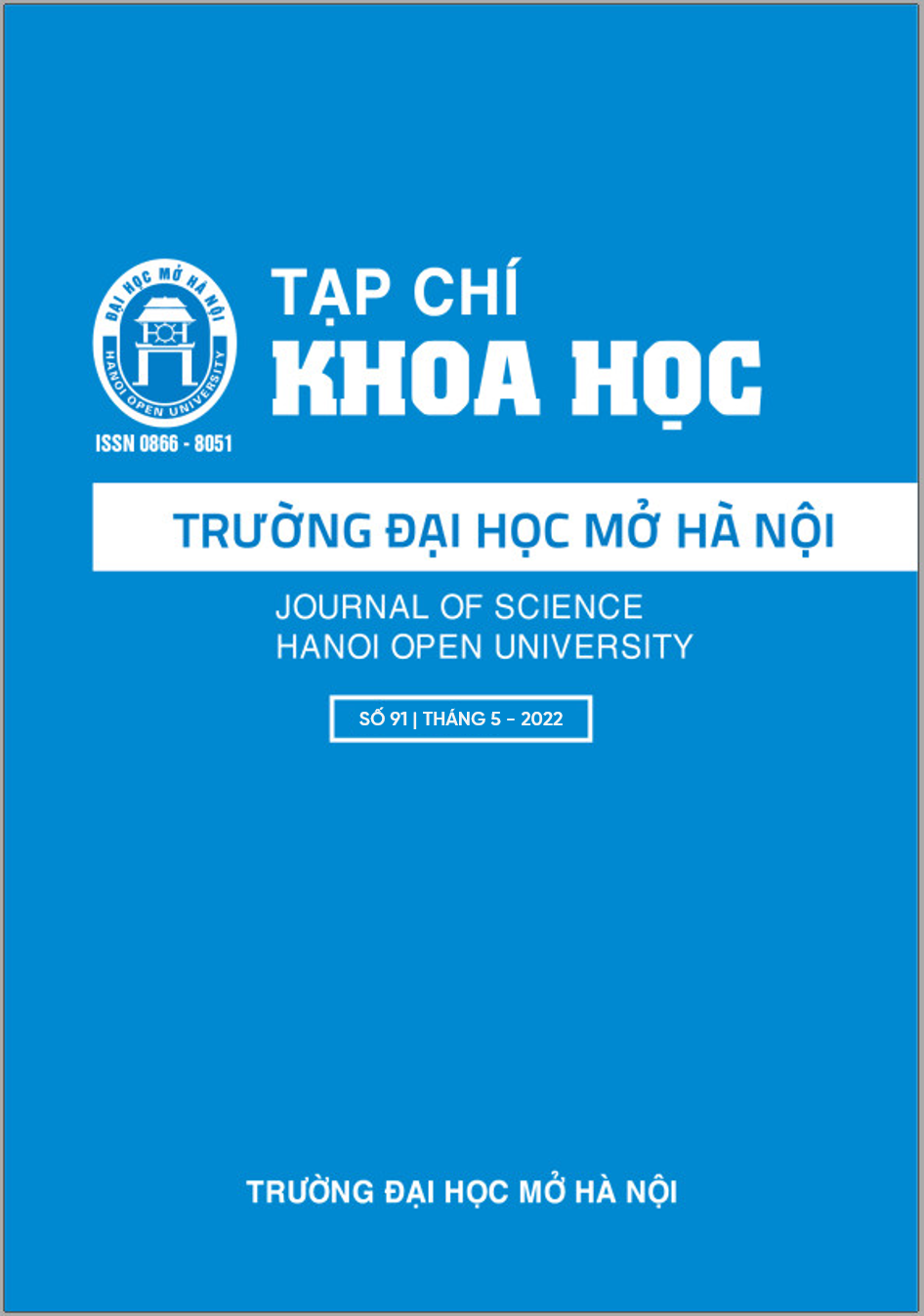MODELING GEOMETRY BY PARTIAL DIFFERENTIAL EQUATION
Keywords:
computer-aided design, Geometric modeling, Surface generation, Partial Differential EquationAbstract
In computer-aided geometric design, surface generation of objects is extremely important. Therefore, fast and accurate surface generation techniques are always an urgent need. Traditional surface generation methods are often based on interpolation algorithms and have limitations in their ability to guarantee the global smoothness of the object surface or the computational volume. Since 1989, a new technique has been born to overcome the above disadvantages. That is the method of surface generation by partial differential equation (PDE for short). The generated surface is a solution of PDE with certain boundary conditions. Over the past 30 years, this method has developed very strongly in both theory and application. Today, the PDE method is widely used for modeling, interaction design, shape morphing, analysis and design optimization.
This paper is intended to introduce the idea of PDE-driven design through some examples and a brief overview of its development and applications.
References
[1]. Farin G (2001), Curves and Surfaces for Computer Aided Geometric Design, a Practical Guide, 5th edn. Morgan Kaufmann, San Diego.
[2]. Castro GG, Ugail H et al. (2008), A survey of partial differential equations in geometric design, Visual Comput 24: 213–225
[3]. Bloor MIG, Wilson MJ (1989) Generating blend surfaces using partial differential equations. Comput Aided Design 21(3):33–39
[4]. Lowe TW, Bloor MIG and Wilson MJ (1990), Functionality in blend design, Comput Aided Design, 22(10):655-665
[5]. Zhang JJ, You L. (2002), PDE based surface representation-vase design Comput & Graphics, 26: 89-98.
[6]. Zhang J, You L (2004), Fast surface modelling using a 6th order PDE. Comput. Graphics Forum 23(3), 311–320.
[7]. Zhang, JJ, You L (2006), Blending Surface Modelling Using Sixth Order PDEs Inter. Journal of CAD/CAM, 6(1) 157-166.
[8]. Ishak SN, Ali JM (2009), Parametric Geometric Surface Generation using Tri- Harmonic PDE European Journal of Scientific Research, 38(3): 380-385.
[9]. Ugail H (2011), Partial Differential Equations for Geometric Design, Springer.
[10]. Ahmat N, Ugail H, Castro GG (2011), Method of modelling the compaction behaviour of cylindrical pharmaceutical tablets, International Journal of Pharmaceutics, 405: 113–121.
[11]. Fu H et al. (2022), 3D Modelling with C2 Continuous PDE Surface Patches, Mathematica, 9, 2905
[12]. Sheng Y, Willis P, Castro GG, Ugail H (2011), Facial geometry parameterisation based on Partial Differential Equations, Mathematical and Computer Modelling 54: 1536-1548.
[13]. Fu H et al. (2021), PDE Surface- Represented Facial Blendshapes, Mathematica, 10, 319.
[14]. Kubiesa S, Ugail H, Wilson MJ (2004), Interactive design using higher order PDEs.
Visual Comput. 20, 682–693
[15]. Ugail H, Bloor MIG and Wilson MI (1999), Techniques for Interactive Design Using the PDE Method, ACM Transactions on Graphics, 18(2): 195–212
[16]. Chen C, Sheng Y, Li F, Zhang G and Ugail H (2017), A PDE-based head visualization method with CT data, Computer Animation And Virtual Worlds, 28 e1683
[17]. You L, Yang X, Pan J, Lee T-Y, Bian S, Qian K, Habib Z, Sargano AB, Kazmi I, Zhang JJ (2020) Fast character modeling with sketch-based PDE surfaces. Multimed. Tools Appl. 79:23161–23187
[18]. You L, Comninos P, Zhang JJ (2004), PDE blending surfaces with C2 continuity. Comput. Graph. 28(6):895–906
[19]. Ugail H,Wilson MJ (2003), Efficient shape parametrisation for automatic design optimisation using a partial differential equation formulation. Comput. Struct. 81(29), 2601–2609
[20]. Ahmat N, Castro GG, Ugail H (2014), Automatic shape optimisation of pharmaceutical tablets using Partial Differential Equations, Computers & Structures, 130:1-9
[21]. Huband J, Li W (2001), Extracting design parameters from airplane wing data by using Bloor–Wilson PDE surface model. Math. Eng. Ind. 8, 239–252
[22]. Dekanski CW, Bloor MIG, Wilson M.J (1995), The representation of marine propeller blades using the PDE method. J. Ship Res. 38(2), 108–116
[23]. Castro GG, Ugail H, Willis P, and Palmer I (2006), Visualization, Imaging and Image Processing. ACTA Press, 2006, ch. Shape Morphing Using PDE Surfaces, 553–558
[24]. Castro GG and Ugail H (2007), Shape Morphing of Complex Geometries Using Partial Differential Equations, Journal of Multimedia, 6(2): 15-25.
[25]. Wang S, Xiang N, Xia Y, You L, Zhang J (2021), Real-time surface manipulation with C1 continuity through simple and efficient physics-based deformations, The Visual Computer 37:2741–2753
[26]. E. Chaudhry et al. (2019), Modelling and Simulation of Lily flowers using PDE Surfaces, 2019 13th International Conference on Software, Knowledge, Information Management and Applications (SKIMA), pp. 1-8
[27]. Sheng Y, Willis P, Castro G, Ugail H (2009) PDE-based facial animation: making the complex simple, In: Advances in visual computing, part II. Lecture notes in computer science (LNCS), vol 5359. Springer, Berlin, pp 723–732
[28]. Castro GG, Athanasopoulos M, Ugail H (2010), Cyclic animation using partial differential equations, Vis Comput 26: 325–338
[29]. You LH, Jin X, You XY, Zhang J J (2013), Surface Modeling Using Partial Differential Equations: A Survey, 17th Inter Conference on Information Visualisation, London
[30].Wang S, Xia Y, Wang R et al. (2019), Optimal NURBS conversion of PDE surface-represented high-speed train heads. Optimization and Engineering 20, 907–928
